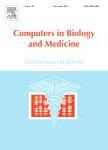版权所有:内蒙古大学图书馆 技术提供:维普资讯• 智图
内蒙古自治区呼和浩特市赛罕区大学西街235号 邮编: 010021

作者机构:Department of Computer Science and Engineering National Institute of Technology West Bengal Durgapur713209 India Department of Electronics and Communication Engineering University Institute of Technology West Bengal Burdwan713104 India Department of Information Technology University Institute of Technology West Bengal Burdwan713104 India Department of Computer Science and Engineering Government College of Engineering and Textile Technology West Bengal Serampore712201 India Department of Ophthalmology Megha Eye Centre West Bengal Burdwan India
出 版 物:《Computers in Biology and Medicine》 (Comput. Biol. Med.)
年 卷 期:2025年第187卷
页 面:109752-109752页
核心收录:
学科分类:0710[理学-生物学] 0808[工学-电气工程] 0809[工学-电子科学与技术(可授工学、理学学位)] 07[理学] 09[农学] 0714[理学-统计学(可授理学、经济学学位)] 0701[理学-数学]
基 金:The authors are thankful to Megha Eye Centre Burdwan West Bengal India for providing valuable input and feedback for this work
主 题:Image segmentation
摘 要:Glaucoma detection from fundus images often relies on biomarkers such as the Cup-to-Disc Ratio (CDR) and Rim-to-Disc Ratio (RDR). However, precise segmentation of the optic cup and disc is challenging due to low-contrast boundaries and the interference of blood vessels and optic nerves. This article presents a novel automated framework for glaucoma detection that focuses on the rim structure as a biomarker, excluding the conventional reliance on CDR and RDR. The proposed framework introduces a Teacher–Student Generative Adversarial Network (TS-GAN) for precise segmentation of the optic cup and disc, along with a SqueezeNet for glaucoma detection. The Teacher model uses an attention-based CNN encoder–decoder, while the Student model incorporates Expectation Maximization to enhance segmentation performance. By combining implicit generative modeling and explicit probability density modeling, the TS-GAN effectively addresses the mode collapse problem seen in existing GANs. A rim generator processes the segmented cup and disc to produce the rim, which serves as input to SqueezeNet for glaucoma classification. The framework has been extensively tested on diverse fundus image datasets, including a private dataset, demonstrating superior segmentation and detection accuracy compared to state-of-the-art models. Results show its effectiveness in early glaucoma detection, offering higher accuracy and reliability. This innovative framework provides a robust tool for ophthalmologists, enabling efficient glaucoma management and reducing the risk of vision loss. © 2025 Elsevier Ltd